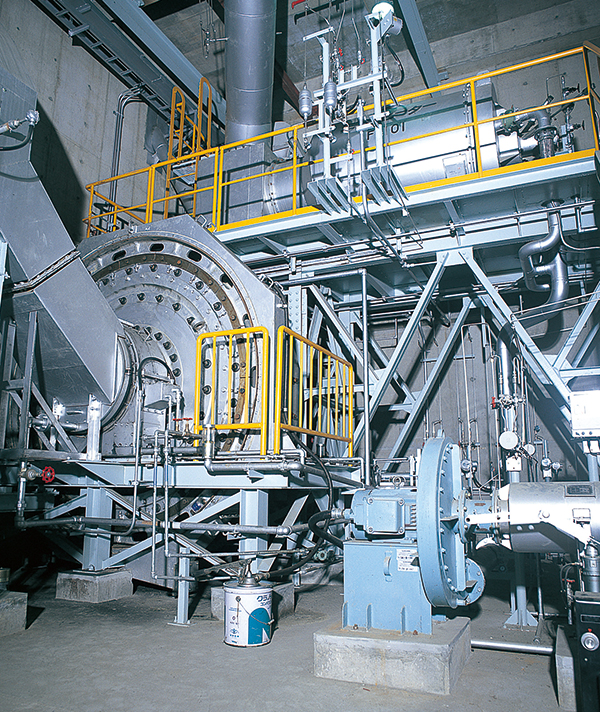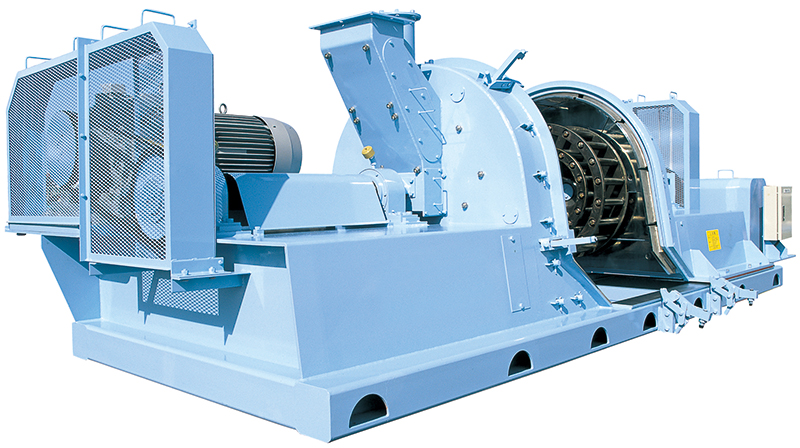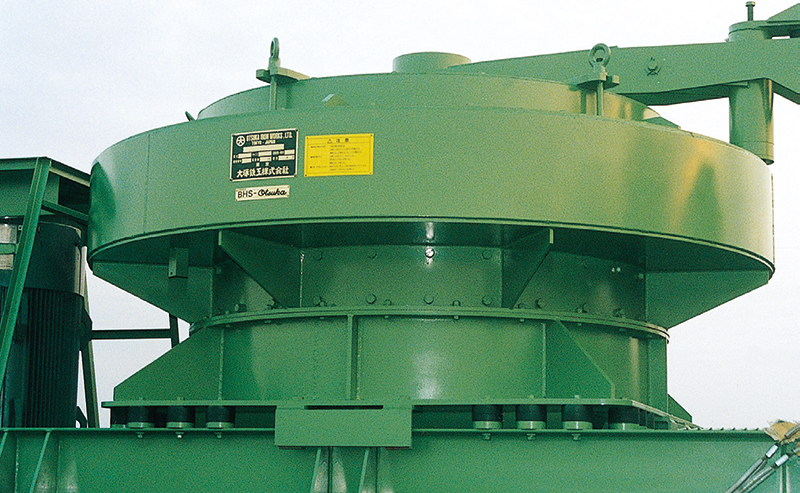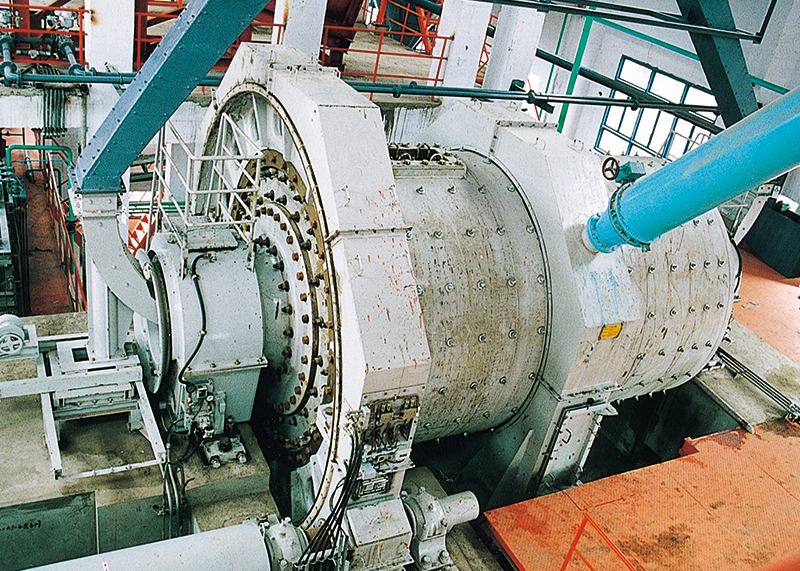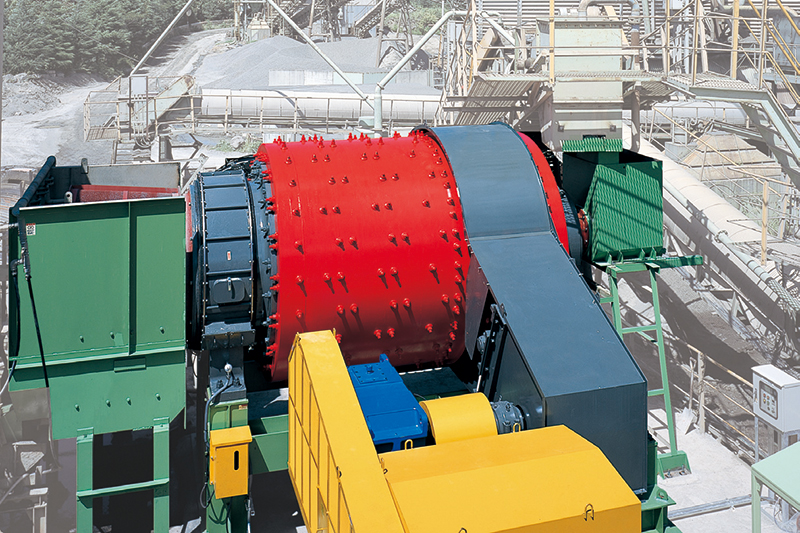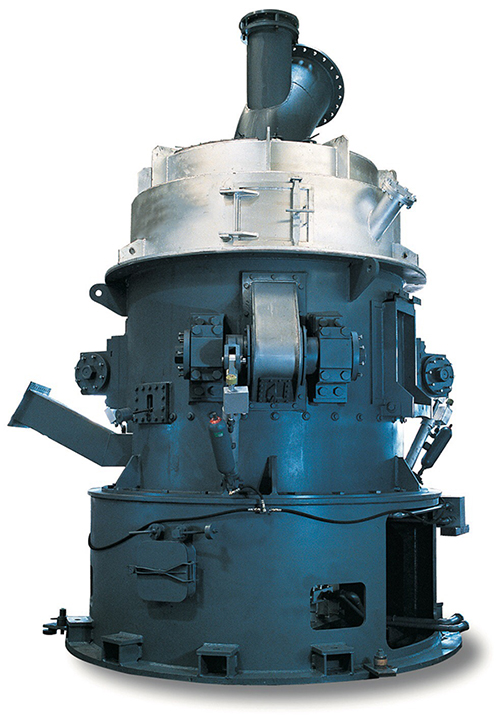High-Pressure Grinding Roll Mill (HPGR), GEOPUS GR
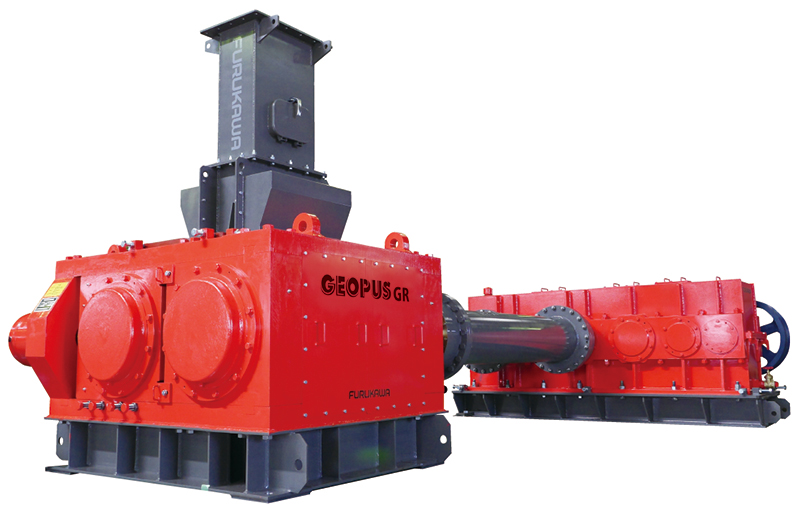
■This crusher provides greater high-density and high-pressure crushing than conventional double-roll crushers and significantly increases the crushing ratio.
■Usable as an alternative to high-power crushers and mills, and demonstrates its strengths by reducing the power and improving the performance of crushing systems.
■GEOPUS GR can be applied in a wide range of fields such as metal, steel, non-ferrous, cement, energy, various mines, and aggregates.
■Grinding between high-density particles
The raw material is ground between rolls having 5 to 10 times the compression force of conventional machines to form a high-density raw material layer. The layer facilitates grinding between high-density particles. It improves the grinding efficiency and throughput.
■High-performance grinding rolls
Carbide bits are optimally placed on the grinding rolls to improve the grinding of the raw material and to grind between the particles. The grinding rolls have a long service life due to the self-lining of the raw material between the bits.
■Low noise and low dust generation
Ultra low-speed rotation of the rolls reduces noise and dust during grinding.
■Compatible with high moisture raw materials
Double-roll grinding prevents blockage caused by adhesion of the raw material.
Autofall Mill
■This is an autogenous mill capable of self-grinding raw materials in sizes from large chunks of several hundred mm down to smaller sizes of several mm or several tens of μm all at once.
・Supply raw materials containing a large amount of large chunks and obtain fine product at once. No dust is generated, and a clean working environment can be maintained.
・This mill is available in two types: air flow discharge type (AS) and peripheral discharge type (AP).
・The air discharge type (AS) can dry and grind raw material containing moisture content of 30% or more. The peripheral discharge type (AS) is suitable coarse product is required.
Stedman Cage Mill
■This cage mill is an impact-type grinder that rotates two cage-type rotors with pins arranged in opposite directions, and crushes the raw material by impact force.
・Simple structure and easy maintenance.
・Compact design and small installation area.
・The range of the product particle size can be adjusted by selecting the number of cage rotations and the number of rows.
・Automatic opening and closing by means of hydraulic cylinders enables cleaning of the grinding chamber and parts replacement in a short time.
・Low generation of fine powder.
・Low noise and quiet operation.
Rotor Mill
■This rotor mill is an open rotor type vertical sizing and grinding machine developed through a technical tie-up with the German company BHS-Sonthofen.
■The raw material is supplied to the center of the rotor, where it is accelerated by the rotor’s unique smooth curve and impacts the side wall.
■This mill is available in a sand bed type for sizing and a ring liner type for crushed sand to suit the purpose.
Rod Mill
■The grinding force of the rods acts only on coarse particles, enabling them to be ground to a uniform particle size.
■Suitable for processing a large amount of raw material when avoiding excessive grinding.
Ball Mill

■This is a grinder that contains many steel balls in a cylindrical drum and grinds the raw material in the drum to several tens of μm or several μm or less by rotating the drum.
・Large amounts of raw material can be ground with a strong force using steel balls.
・Suitable for fine grinding and ultra fine grinding.
・Simple structure makes operation and maintenance easy.
■Other functions
・A continuous processing type and batch processing type ball mills are available. There is also a wet type that grinds the raw material in a liquid such as water or oil, and a dry type that grinds it in a dry state. In the dry type of ball mill, it is possible to dry and grind raw materials containing a moisture content of 10% or more.
・There is also a compartment type with partitions the inside the drum chamber for efficient grinding.
・Using ceramics for the inner wall cylinder liner and balls makes it is possible to prevent iron from being mixed into the product.
■Product configurations
・Dry type ball mill (grade discharge type)
Various ores, calcium carbonate, coal, chemical fertilizers, silica sand, waste incineration residues
・Wet type ball mill (trunnion discharge type)
Various ores, limestone, coal, refractory bricks, electronic materials, ceramic raw materials, etc.
・Moist type ball mill (peripheral discharge type)
Graphite, carbon, coal, etc.
・Batch type ball mill (dry or wet fine grinding)
Wide range of applications from small laboratory equipment to actual machine use
Belt-Drive Ball Mill “Gaius”
■Newly developed belt-drive ball mill
・Use of a large-diameter drum greatly increases the grinding efficiency.
・Overgrinding is suppressed by the short drum length of the cylindrical system, and a uniform product can be obtained.
・Low speed grinding greatly reduces the power by 20 to 40% compared to conventional ball mills.
・Low speed operation extends the service life of the liner and balls, resulting in reduced running cost.
・Newly developed belt-drive system decreases vibration and noise, and maintenance work can be greatly reduced.
※Gaius: A coined word combining Gaia, meaning earth, and Aquarius, meaning water.
Vertical Fine Grinder, NE Mill
■A constant particle size and processing amount of the ground product are maintained.
・The grinding balls run while rotating on the rings, so the balls wear uniformly without unevenness. For that reason, this is a grinder that can produce products of a constant particle size.
・The size of the contact surface between the rings and the grinding balls hardly changes even if the grinding balls are worn, so the processing capacity is not reduced and stable performance is always obtained.
■Maintenance is easy.
・There are no complicated mechanical parts such as bearings inside the mill, and there is no need for lubrication or other work.
・The long service life of the grinding balls and rings reduces the frequency of replacement, and work such as centering is not required.
■Efficient grinding is performed.
■Electricity consumption is small.
■The mill has a simple structure.
■Low noise and quiet operation.



